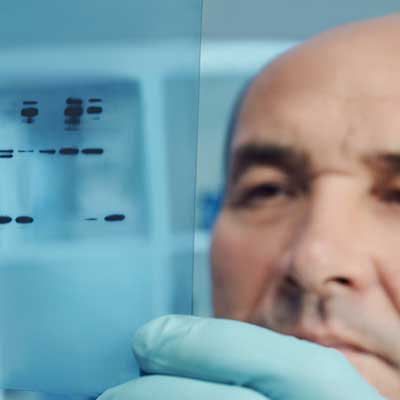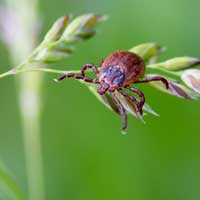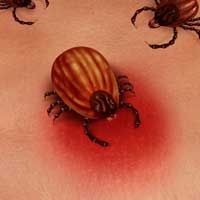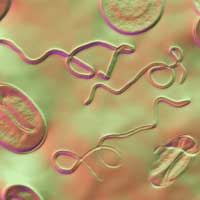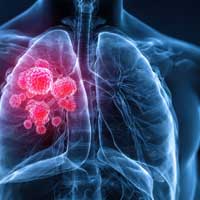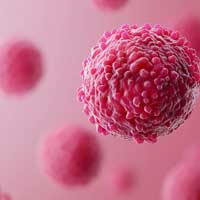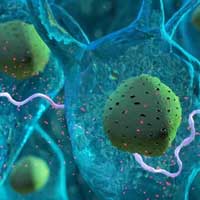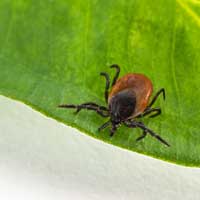Lyme Disease Treatment - A Primer on Monitoring Recovery
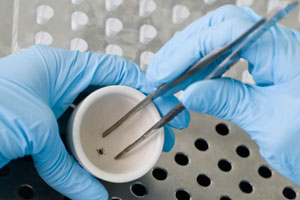
Suffering from Lyme disease is never easy. Treatments can be complicated and co-infections, (such as additional virus, bacteria, fungal and even parasitic infections, which LLMD's Lyme literate medical doctors identify as Lyme disease complex) can be devastating. While oral antibiotics such as doxycycline, amoxicillin or cefuroxime axetil (Ceftin) have been effective at treating Lyme, this usually only helps if the patient has caught the infection in the early stages, which is unfortunately not the case for patients with chronic Lyme disease.
To make this easier to understand, let's define Chronic Lyme Disease Complex (CLDC), based on our ten years of clinical experience and our Lyme literate medical doctors' experience with treating chronic infections, fibromyalgia and autoimmune diseases. Our group defines CLDC as involving one or more factors: Lyme disease; its co-infections; the reactivation of dormant infections, such as viruses; and an immune compromised state that can be further complicated by heavy metal and chemical toxicities. How this differs from the CDC's definition is, they are treating Lyme disease in a vacuum, as one infection, and not clinically correlating it to the complete complex diagnosis that is typically seen in patients.
How Lyme Disease is Identified, Treated and Monitored
What is Lyme Disease?
According to Paul G. Auwaerter of Medscape.com, some patients with Borrelia burgdorferi (the scientific name for what causes Lyme) can remain seropositive (having the bacteria in the blood) for decades, even after successful treatment with antibiotics and resolved clinical symptoms. However, in our clinical experience (over a decade of working with chronic Lyme disease complex) this is normal humoral immune response and not a continuation of active chronic infection, especially if all key symptoms remain at bay. Symptoms are really the most important factor, which we will explore later.
It's important for patients to monitor their progress, otherwise, how will anyone know if they are improving or at risk of relapse? It is equally important to have the proper tests and to understand how they work and from there, determine the best possible pathway for modifying treatment to attain long-term health. This guide will describe both how to observe progress and explain how the diagnosis of chronic Lyme disease complex works.
The subject on testing and monitoring is a bit complicated and a multi-step process. This is not a well-defined area of medicine and we are always learning more information on new diagnostic tools. In our opinion, it takes many factors including strong clinical experience and an integrative approach to help patients. This article will discuss why the improvement of the patient's overall symptoms held overtime is really the best measure and final indicator of successful chronic Lyme disease treatment.
Standard Types of Laboratory Blood Tests for Lyme Disease
ELISA – Enzyme-Linked Immuno Sorbent Assay or ELISA, is a type of wet-lab test that uses antibodies and color changes to identify a substance, in this case, Lyme disease. What doctors and researchers are looking for in this instance are antigens (a cell's identifying feature, like a microscopic caller ID) from the Borrelia bacteria.
When laboratories find these antigens, they attach a specific antibody, a blood protein used to identify bacteria and viruses, which combines with the Borrelia antigen. Next, the enzyme's substrate (the surface on which a cell feeds itself) is added, which produces a detectable signal, usually a change in color. This helps the laboratory define which foreign bodies are in the bloodstream.
Even though the Center for Disease Control (CDC) recommends this test as the first line of testing, it can provide a false negative in patients with weakened immunity or on medications such as steroids. It's not uncommon for Lyme disease patients to be originally diagnosed with an autoimmune disease or fibromyalgia and therefore be given suppressive medication to manage symptoms, instead of truly treating the disease.
IgG – Immunoglobulin G is an antibody isotype, making up 75% of immunoglobulins (proteins that work as antibodies) that are present in the bloodstream. Because IgG is so plentiful, it is the main factor in controlling infection and as a result, doctors can measure IgG levels and indicate a patient's immune status to particular pathogens (microorganisms that can cause disease). However, once positive, this is not a good tool to monitor progression or improvement. The test can stay positive, which doesn't provide clear clinical information in the monitoring of the patient. In our clinical experience, this is really more of an initial diagnostic tool for patient that signs and symptoms of chronic Lyme disease complex.
IgM – Immunoglobulin M is the first antibody to respond to initial antigen exposure. It is larger than IgG and the biggest antibody in the human circulatory system. When Erythema migrans is detected in a Lyme disease patient (known as the "bull's-eye rash"), IgM is used to identify it, but only during the first four weeks of a bite, if the rash is even present, according to the CDC.
It is important to note that only 25-30% of Lyme patients remember or experience a rash. If IgM isn't used to detect Lyme, it can lead to a misdiagnosis of Lyme disease. Additional tests may be more helpful, such as IgG. However, usually by the time patients come to recognize they have Lyme disease complex, they are beyond IgM testing.
Western blot – The problem with using IgG, IgM and ELISA is they're better for locating infection, not monitoring overall health. The Western blot is a widely accepted analytical technique that detects specific amino-acid sequences in proteins. There are hundreds of thousands of different proteins, but once you identify the protein, you can determine the correct treatment or antibody.
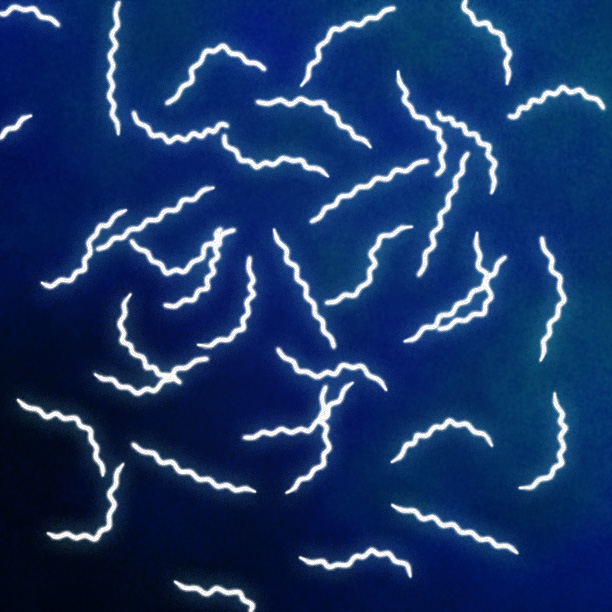
The dark-field microscopy test with silver nitrate stain is probably the best test, though the spirochete is only seen in about 40% of cases. The borrelia changes shape and hides intracellularly immediately when taken out of the host (human or animal) during a blood test. This method not always 100% accurate either. However, some doctors are now working on improving this method by creating a medium (serum) so that borrelia can live up to eight weeks and retest the blood when the spirochete reemerges from hiding.
Ispot Lyme Test – Another testing option that Envita uses is called the Ispot Lyme test, which has a better specificity when it comes to testing for Borrelia. This type of test measures the cytokine IFN-g secreted by the patient's T cells.
Monitoring Herxheimer Reaction and Healing Process with Lyme Disease Complex Treatment
If you're a Lyme patient, you may have heard of the Jarisch-Herxheimer reaction, which is associated with any spirochete infection (such as syphilis or borreliosis [Lyme disease]). The reaction is a nasty bodily response to antibacterials. You see, when antibiotics kill off bad bacteria, Borrelia in this case, their corpses release endotoxins and lipoproteins faster than the body can remove them. This is known in integrative medicine as a "healing crisis." These toxins can lead to other health problems, such as fever, chills, anxiety, myalgia, headaches, hypotension, tachycardia (increased heart rate), hyperventilation, vasodilation with flushing and even exacerbation of skin lesions. This usually occurs in short, 30-minute bursts during effective treatment.
These symptoms are greater in the beginning of treatment, but lessen and go away as the patient improves. It is critical to point out, that when patients have been on other suppressive medications prior to starting treatment, the symptoms are a bit worse. Also, the more infections involved, the greater the Herxheimer reaction. Over the years, we've developed simple tools to lessen these reactions and make it much more tolerable for the patient.
As you can see, Lyme disease treatment can also make you sick during die off, making the disease all the more frustrating. Patients will experience windows of health and illness and depending on infection load, immunity and toxicity found in each patient. For example, those near farming communities with more exposure to pesticides have worse symptoms. At times, it may appear that the patient isn't improving at all.
However, once the symptoms start to break, patients may express things like, "I don't remember feeling this well in years." As those windows and frequency of improvement grow, this becomes the key sign of getting well. It's really the bottom line for patients.
During treatment, patients are monitored and may need strong emotional encouragement. However, we notice by the end it's these patients that are now supporting other new patients.
The direction of symptom improvement seems to follow Hering's Law from top to bottom and from inside out. This is a direction of improvement used by classical homeopathic medicine when monitoring progress in patients and we have seen this as a clinical trend as well.
The Importance of the Immune System in Fighting Lyme Disease Complex
Lyme disease complex seen in chronic Lyme patients almost always involves many co-infections, making it hard to treat because the immune system has to fight each individual virus, fungus, bacteria or parasite. One of the most common viruses associated with Lyme is HHV-6 (human herpes virus 6) which is neurovirulent, meaning it can hide in the nerve's ganglions, or nerve networks. Lyme disease can also hide in this way and as you may know, flushing viruses from the nervous system is one of the most difficult forms of treatment. Typically, the fatigue symptoms patients suffer are related to viral components of this complex and take the longest to clear. Some of the more common viruses include Epstein-Barr and cytomegalovirus.
Thus, a critical response is a natural response, using your own immune system. One of the most important immuno-responses is an antigen called CD57 (also known as LEU7 or HKN1, which stands for "human natural killer 1"). Natural killer cells are essential to the immune system for the way they rapidly respond to tumor formation and virally infected cells.
NK cells are "smart" – they adapt to their environment, they rapidly respond to infections, they can memorize specific antigens and they can even recognize stressed cells even without antigens or major histocompatibility complex (just like how antigens are like caller IDs for cells, MHCs are IDs specifically for communicating with white blood cells [leukocytes]).
What does that mean? It means that NK Cells are an important defense against viruses and tumors, simply because they don't need to be told which cells to kill. Best of all, NK cells can tell us laboratory information in regards to fighting infection and an immune compromised state.
What does that have to do with Lyme disease and its co-infections? Well, a doctor named Stricker realized if he looked at the levels of CD57, he could determine that patients fighting infections (particularly Lyme disease) have decreased natural killer cells. This test is known as the "Stricker NK Panel CD57" test, although it is much more thorough than just measuring CD57 levels. It is important to note that these values clinically don't change quickly and are still not the best way to measure progress, especially if used alone, away from the full symptom picture of the patient.
In order to get a full picture of Lyme disease and its co-infections, it's important to look at all factors including environmental stress, life changes (such as divorce or death) or chemical stressors. This can be measured using a method called "Biofeedback."
There are many ways to test for these things, but not all tests have adequate research to back them up. This is why Envita uses a special device familiar in integrative medicine called "Electroacupuncture According to Voll" or EAV. Our center does not use the EAV for diagnosis, but rather as galvanic screen testing (involving electric currents produced by physiological action via acupuncture points).It helps to correlate each person's physiological response to emotional stress, immunity and homeopathic dilutions of nosodes related to patient overall health. Nosodes represent homeopathic dilutions made from various infectious substances. We find these homeopathic tools helpful in giving snapshots of patient's overall health.
It helps to correlate each person's physiological response to emotional stress, immunity and homeopathic dilutions of nosodes related to patient overall health. Nosodes represent homeopathic dilutions made from various infectious substances. We find these homeopathic tools helpful in giving snapshots of patient's overall health.
Understanding the Full Symptom Picture
It is not at all easy to monitor improvement with a patient simply using testing. According to the CDC and doctors alike, symptom improvement over time is the best proof of recovery. Once all these concepts are reviewed by doctors experienced with Lyme disease, it is believed to be possible to monitor improvement in the quality of life and help each patient reach optimal health. Resolving clinical symptoms is the most important factor in a patient reaching health with Lyme disease and its various co-infections, known as chronic Lyme disease complex.
To learn more about treatment, monitoring and progress please feel free to contact us with any questions you may have.










